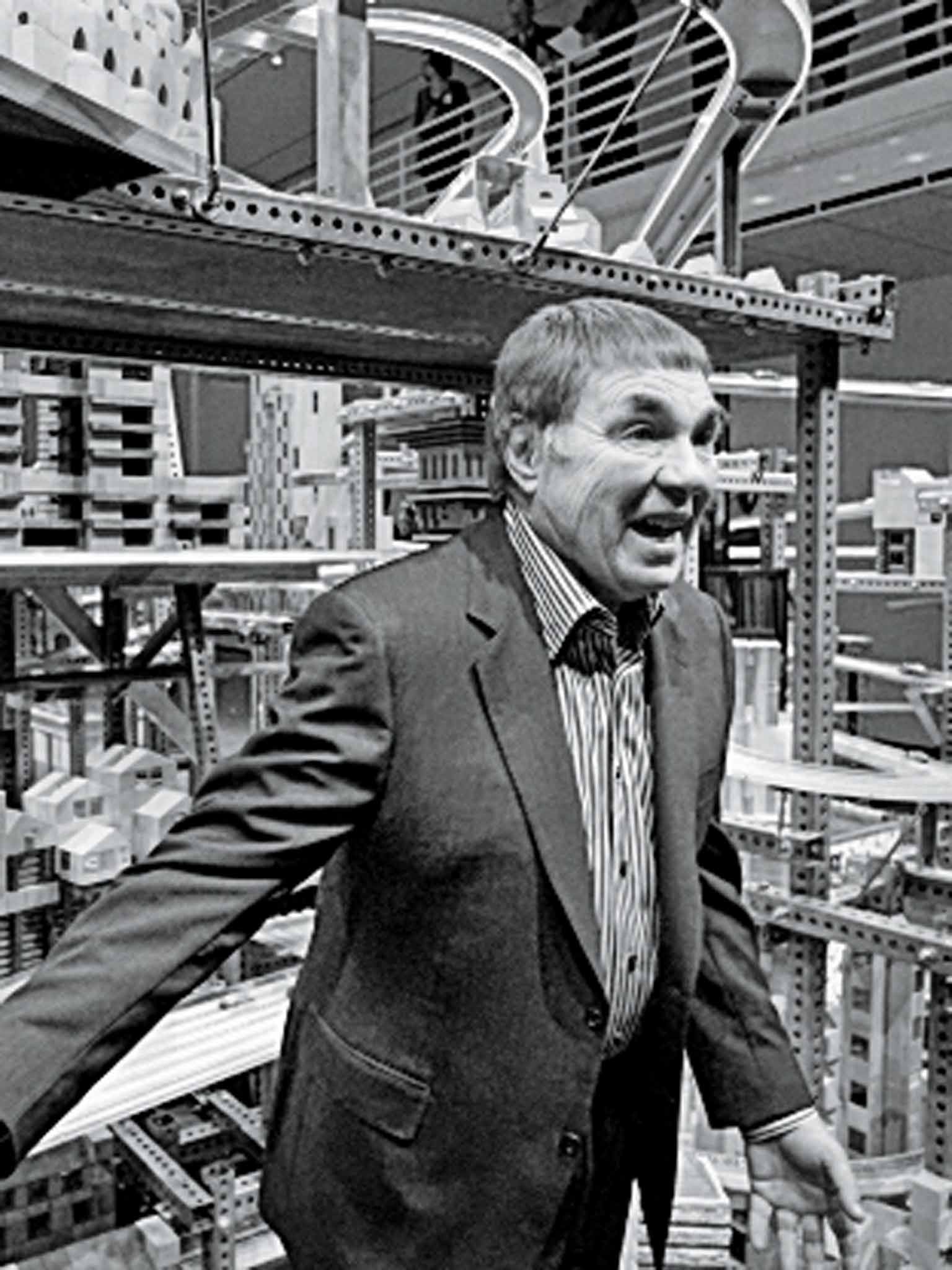Chris Burden: Artist and sculptor hailed by critics for his unbounded imagination and willingness to make bold statements
Burden predicted the arrival of driverless cars when he unveiled 'Metropolis II' in 2012.

When Chris Burden stood in front of a camera in 1971 and had a friend open fire on him with a rifle he was making a bold statement: a new artist had arrived, one who was willing to push the limits of art as far as his imagination would take it. Over the next 44 years that imagination would prove all but limitless: Burden had himself nailed to the back of a Volkswagen beetle, locked into a school locker for nearly a week and built a 65-foot skyscraper entirely out of Erector Set parts (known as Meccano in Europe).
To top it off, he constructed one of Los Angeles' most stunning landmarks, "Urban Light", a maze of 202 restored antique street lights that welcomes visitors to the Los Angeles County Museum of Art. At night it illuminates a block of the city's Wilshire Boulevard.
Burden also predicted the arrival of driverless cars when he unveiled "Metropolis II" at the same museum in 2012. The huge, intricate kinetic sculpture, made partly out of Lego blocks, features 1,100 miniature cars racing through a high-rise city at a scale-model speed of 240mph.
Burden started out in 1971 when he had a friend point a rifle at him and fire a single shot for a work called "Shoot." The video, still available on YouTube, shows him wounded in the arm. Three years later he had himself nailed to the back of a Volkswagen for a piece he called "Trans-Fixed." By the end of the 1970s, however, he had begun to gravitate from performance art to large conceptual pieces.
In 1979 he created "The Big Wheel", a huge kinetic sculpture in which a towering iron wheel comes to life with the revving of the engine of a motorcycle. It goes on to spin for hours, initially at frightening speeds, in a display of kinetic energy that seemed to fascinate the artist and is seen in several of his works.
"He saw it not so much as the end of a process for a collector, but as a tinkerer, a scientist, somebody using models, toys, diagrams, to understand and explore the world around him," said Paul Schimmel, former chief curator for the Museum of Contemporary Art and curator of the first Burden retrospective, in 1988.
Born in Boston, Burden earned degrees in fine art from Pomona College and the University of California, Irvine. His degree piece for the latter was "Five Day Locker," in which he locked himself in a small school locker. Burden lived in Los Angeles' Topanga Canyon arts colony with his wife, the artist Nancy Rubins. He died of cancer.
Christopher Burden, artist: born 11 April 1946; married Nancy Rubins; died 10 May 2015.
Join our commenting forum
Join thought-provoking conversations, follow other Independent readers and see their replies
Comments